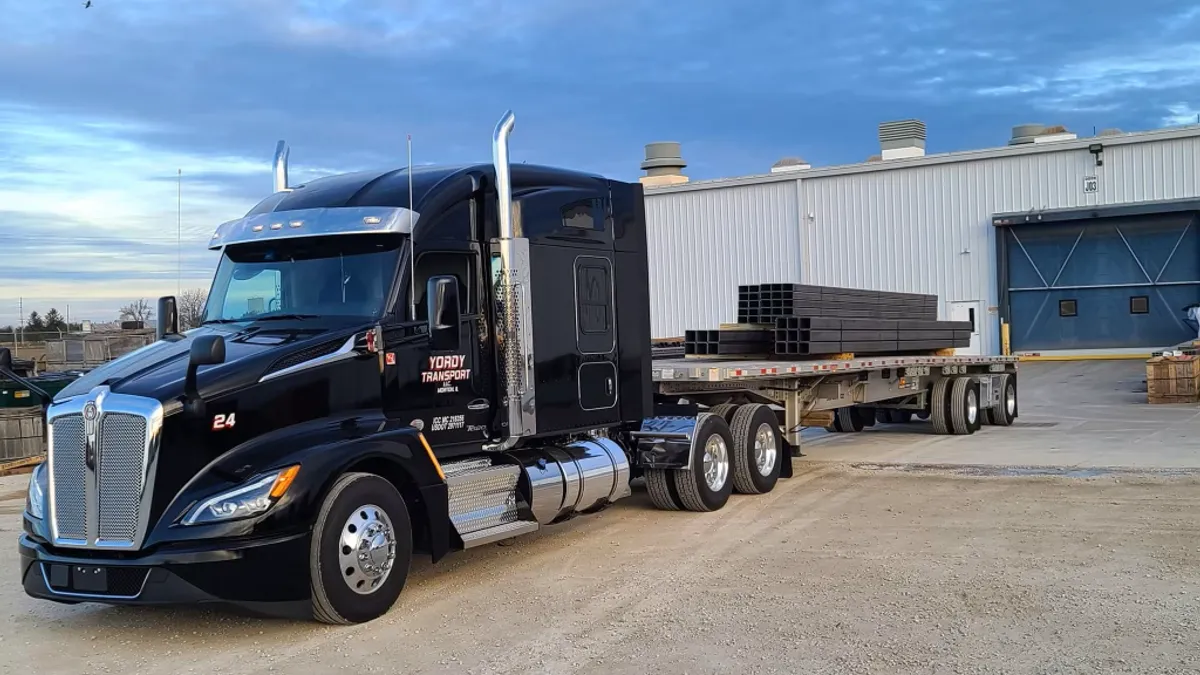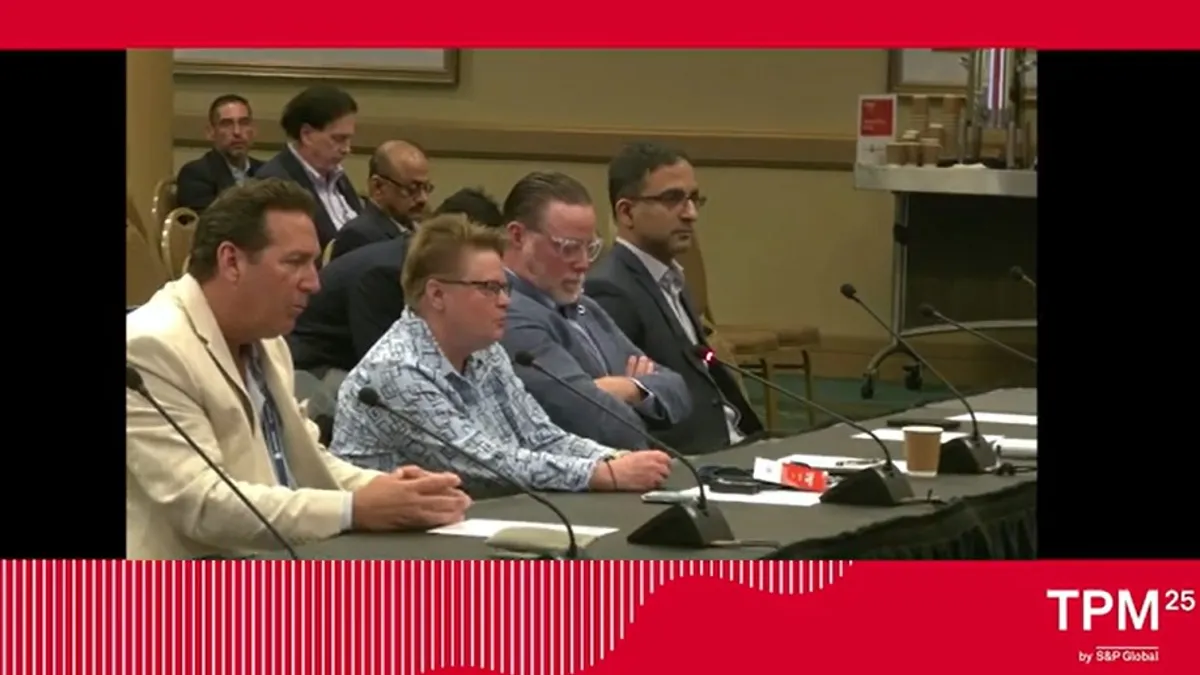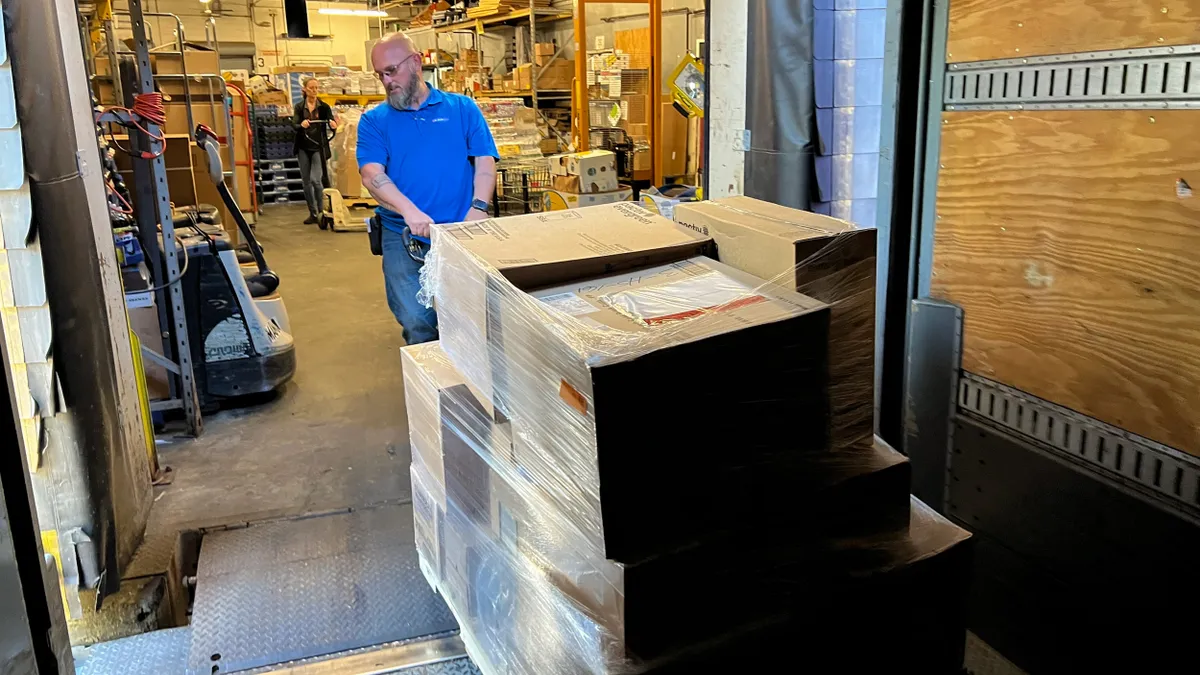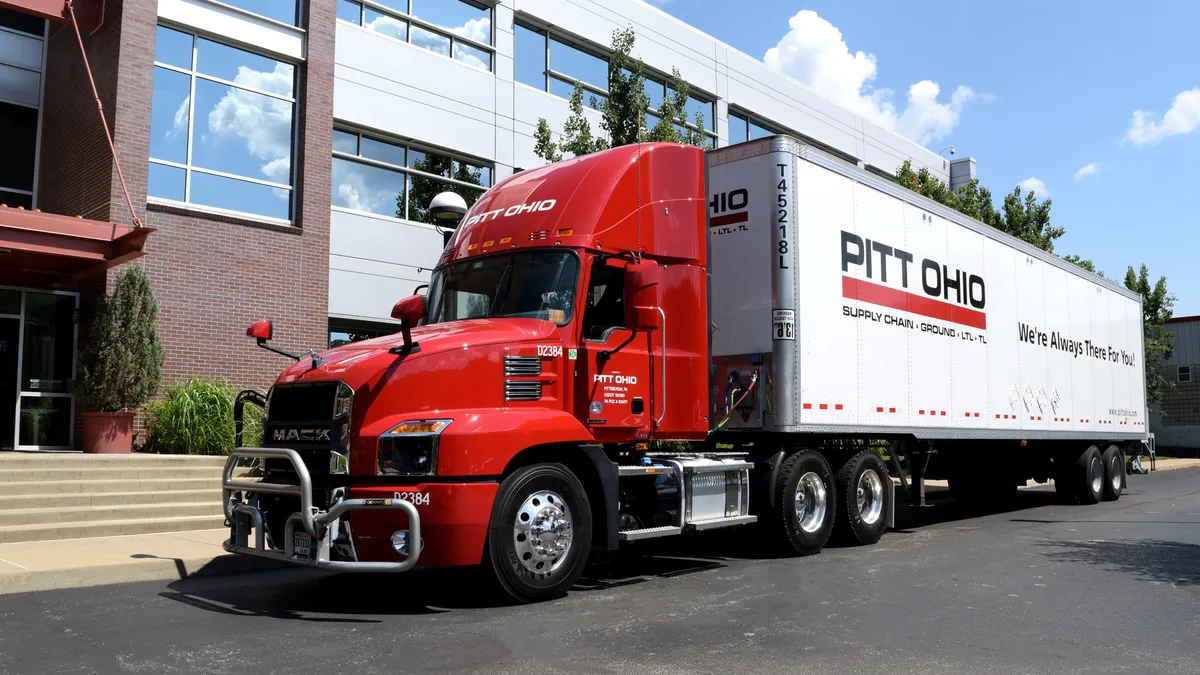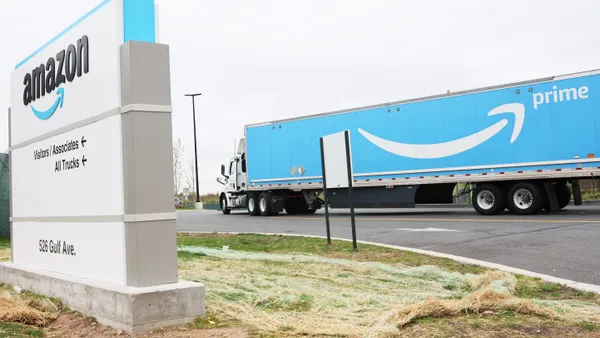Dive Brief:
- C.H. Robinson has released a tool to help shippers track carrier emissions globally across modes, the company announced Thursday. Called Emissions IQ, the self-serve tool is available to C.H. Robinson customers for free, according to the release.
- A product of the company's tech incubator, the tool automatically calculates emissions and provides a visualization of a shipper’s carbon output, according to the release. C.H. Robinson emissions analysis is available now for all modes, but ocean and air will be added to Emissions IQ later in the year.
- Emissions IQ can also identify actions users can take to mitigate emissions, and it allows shippers to compare against others. C.H. Robinson said it "offers the largest set of emissions benchmarking data in the industry," with a worldwide network of almost 200,000 customers and carriers.
Dive Insight:
Scope 3 emissions, including pollution from purchased transport, are difficult to tackle. Much of it depends on the resources third-party providers invest toward sustainability, over which shippers have no direct control. But access to data is key to tackling sustainability goals.
"You can only change what you can measure,” C.H. Robinson’s Chief Human Resources and Environmental, Social and Corporate Governance Officer Angie Freeman said in the release. "Even companies committed to sustainability have struggled to capture their emissions across complex, multi-faceted supply chains."
C.H. Robinson piloted Emissions IQ with 125 companies, including Tempur Sealy. With the tool, the company reduced domestic carbon emissions by nearly 1,000 metric tons of carbon equivalent and saved more than $150,000 in three months, Scott Vollet, executive vice president of global operations at Tempur Sealy, said in the release.
Along with measuring carbon output, Emissions IQ gives suggestions for mitigation. One of the first tactics the tool looks for is opportunities to convert over-the-road trucking to intermodal, Tim Gagnon, C.H. Robinson's vice president of analytics and data science, said in an interview.
"Intermodal emissions usage is a fraction of a truckload shipment," he said. "And, often times, [there is] material savings from a pricing perspective, as well."
This is something carriers with intermodal offerings are working on. Schneider, for example, put intermodal as one of the centerpieces of its sustainability plan. The company wants to double its intermodal size by 2030, which it said would reduce emissions by an additional 700 million pounds per year.
With intermodal conversions as a first tactic, Emissions IQ would scan next for opportunities to optimize less-than-truckload shipments, according to Gagnon. When a shipper has a priority shipment, and it's taken by a truck that's half full, emissions is one of many ways that shipment is not optimized, he said.
Though it's difficult to get an pinpoint-accurate number, trucks are about 80% utilized, on average, across all shipments in the U.S., he said.
If a truck is running a lane four days a week, Emissions IQ might prompt the user to adjust inventory management to make it possible to turn that into a three-day run, Gagnon said. Or maybe another shipper's freight could be added to that truck.
Though the ability to measure emissions isn't new to C.H. Robinson, Emissions IQ updates and standardizes the methods, said Gagnon. Emissions IQ is based on the Global Logistics Emissions Counsel framework, which C.H. Robinson said is universally accepted.
Current methodology tends to vary across modes and across carriers, and it's relatively immature in the LTL space, Gagnon said.
The company worked with the Massachusetts Institute of Technology and the Environmental Protection Agency's SmartWay program to provide a standardized way to measure LTL emissions, which C.H. Robinson said is a "first." The model accounts for extra miles and higher fuel consumption related to multiple pickups and deliveries, according to the announcement.
Measuring transport emissions is an area of supply chain that continues to evolve. There's room for modeling to become more granular, particularly when it comes to LTL. Data from C.H. Robinson and most other places, Gagnon said, doesn't reflect newer types of equipment, such as electric vehicles or more aerodynamic trucks.
While Emissions IQ offers standardized and accepted measurements, it's lacking in detail. "And that is absolutely something that we've got to invest [in] as an industry," Gangnon said.
In the meantime, shippers are looking to make their operations greener now, and C.H. Robinson considers Emissions IQ as an accomplishment in scaling its capabilities to meet customer demand for this type of emissions tracking.
Transportation accounts for about 20% of the world's global emissions, and there are tens of thousands of companies that want to make their logistics more sustainable, Freeman said in an interview.
C.H. Robinson said a recent customer study showed sustainability is shippers' second-biggest pain point in 2021. And the number of companies planning to take action to reduce their carbon footprint has doubled since last year.
"But it's really hard to get started, and it's very complex," Freeman said. "That is a big reason why we wanted to tackle this."











